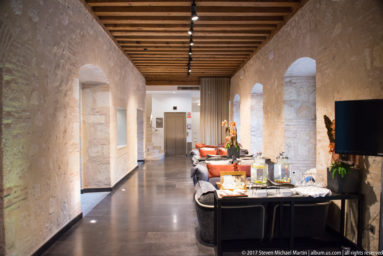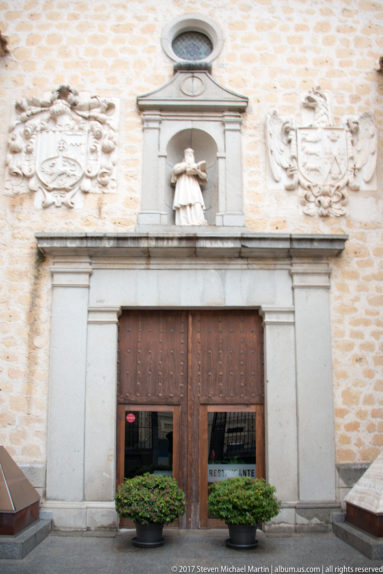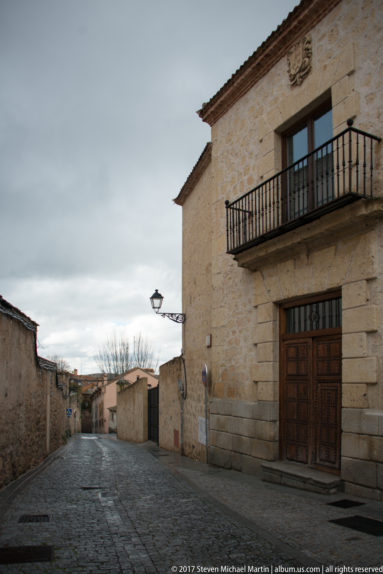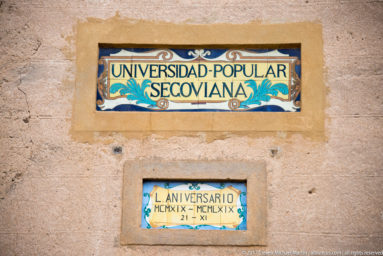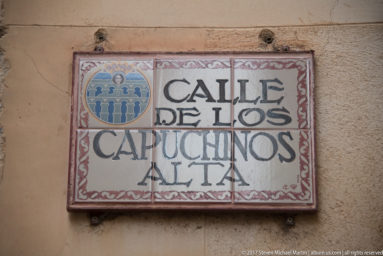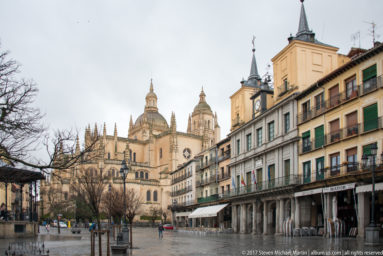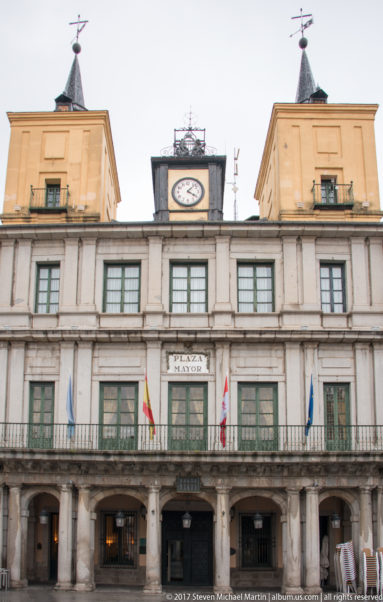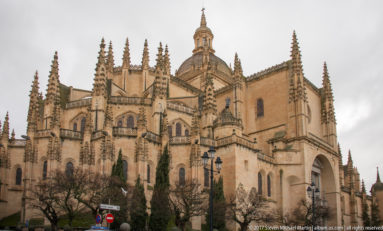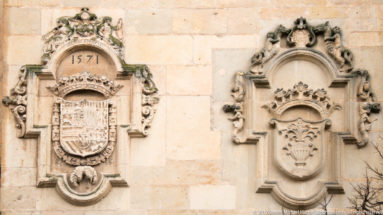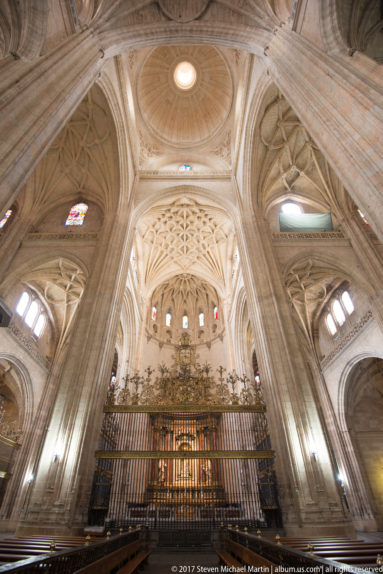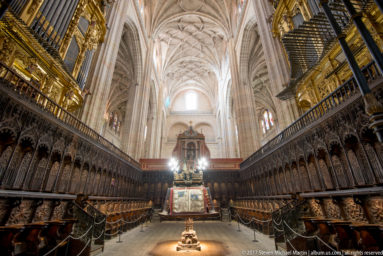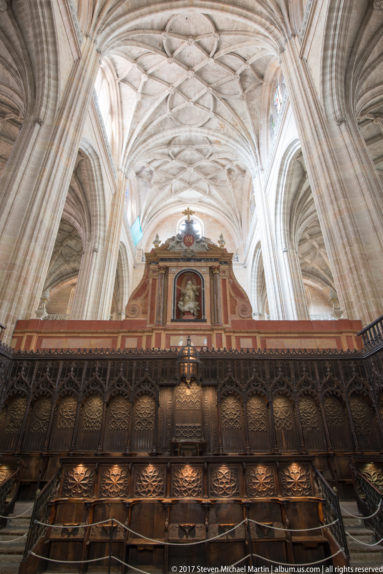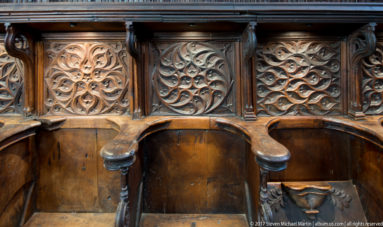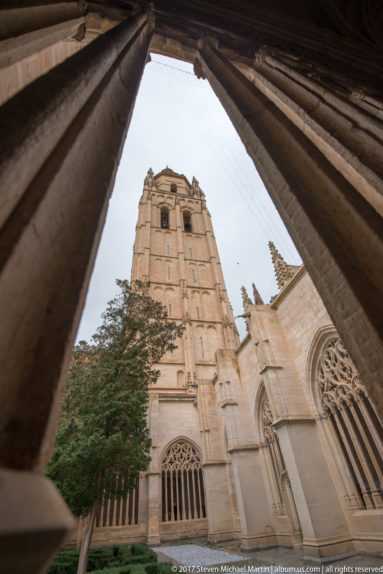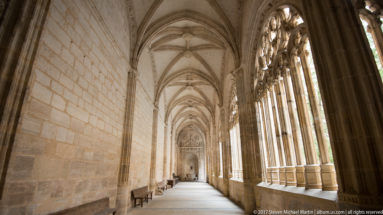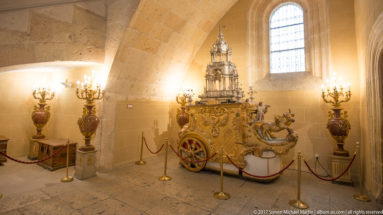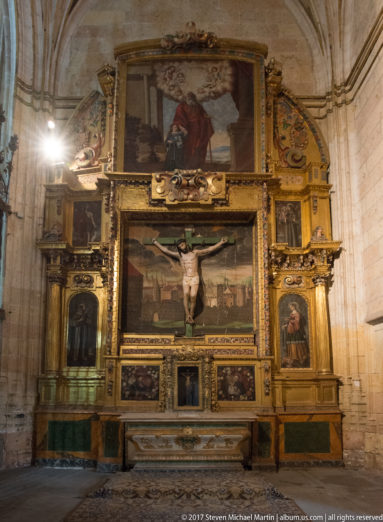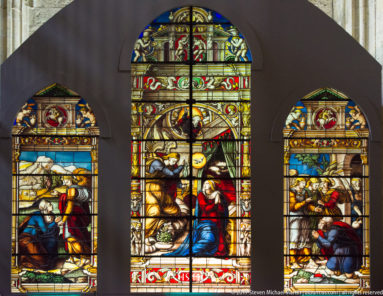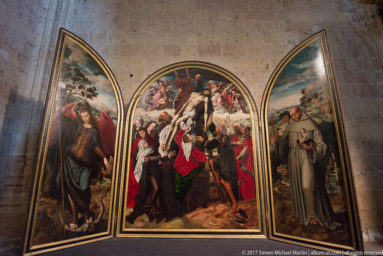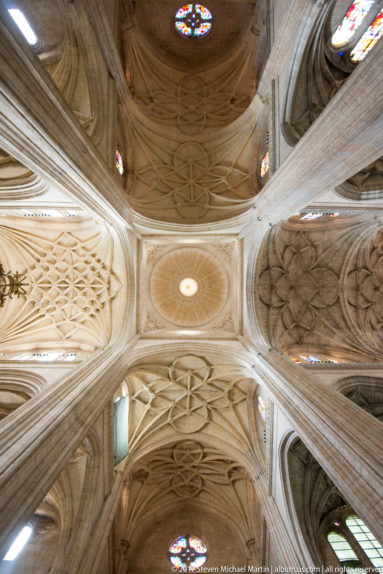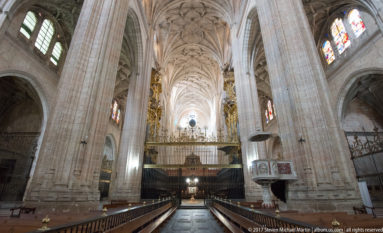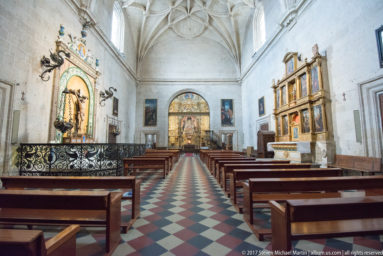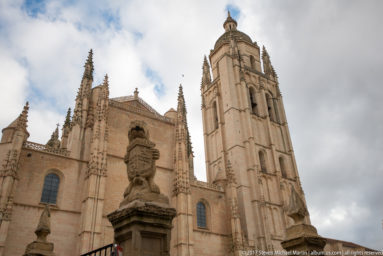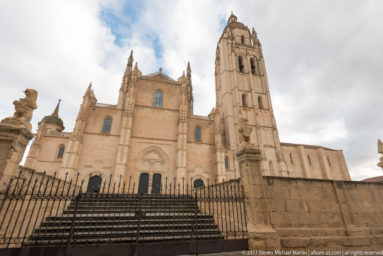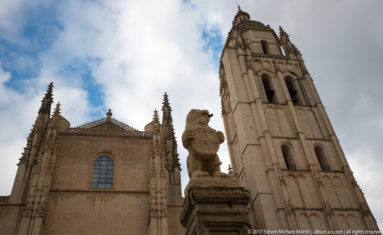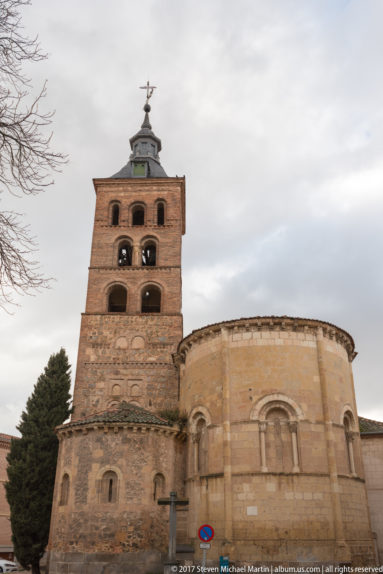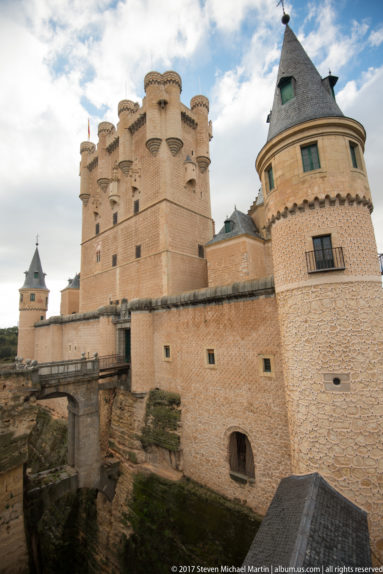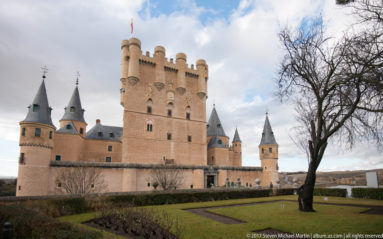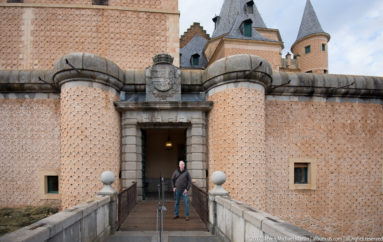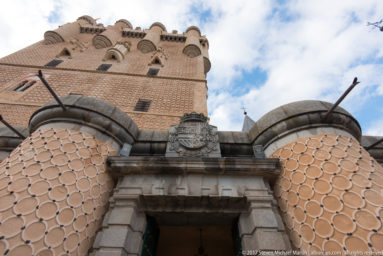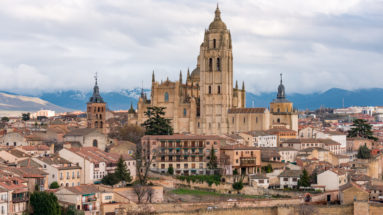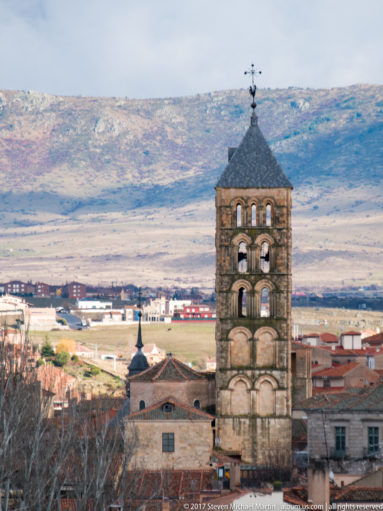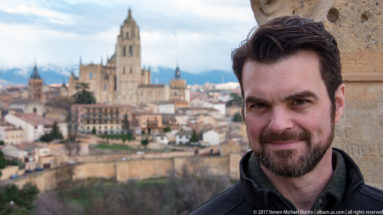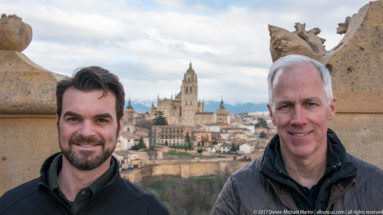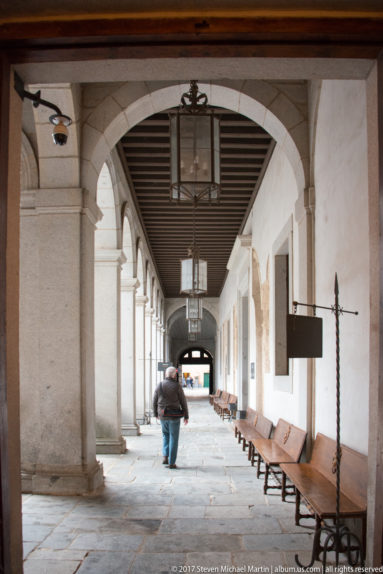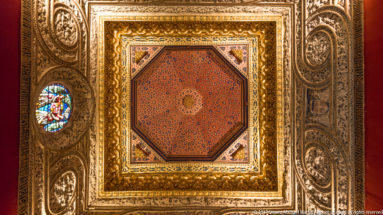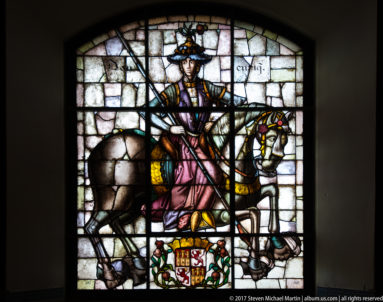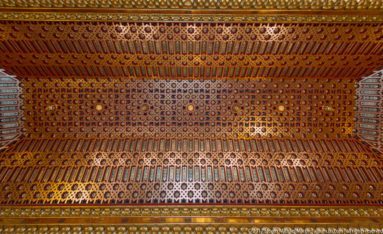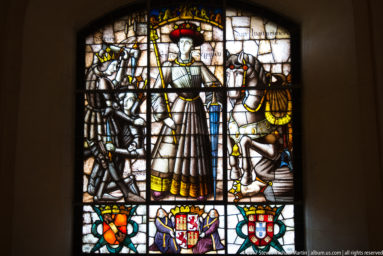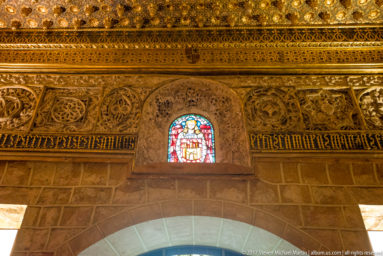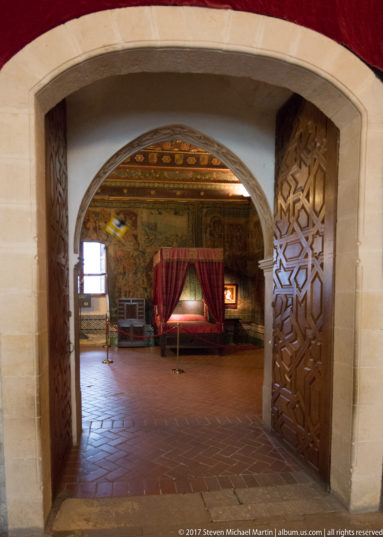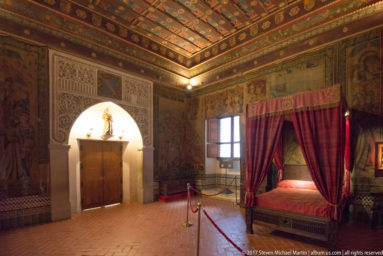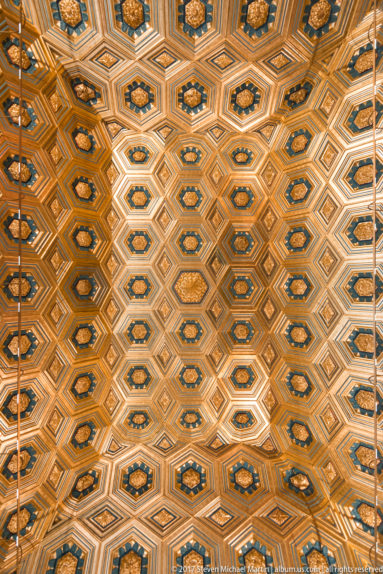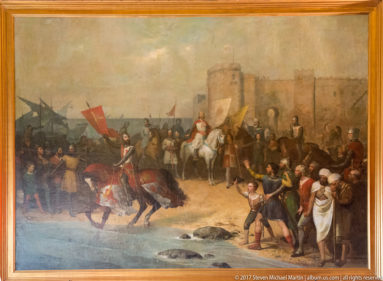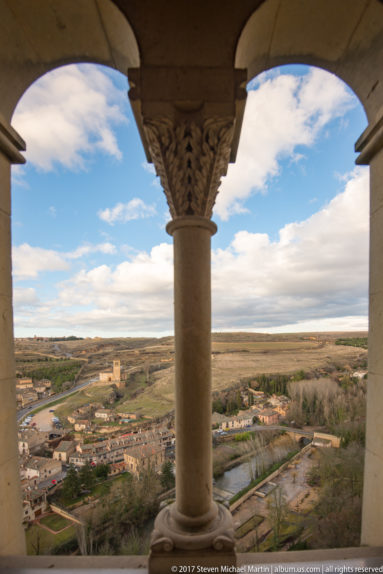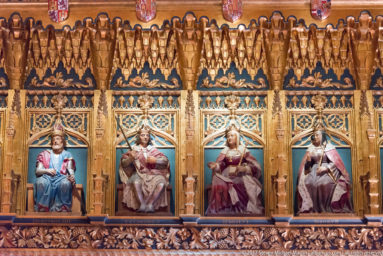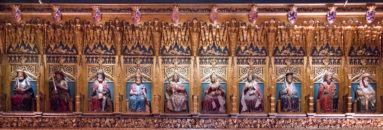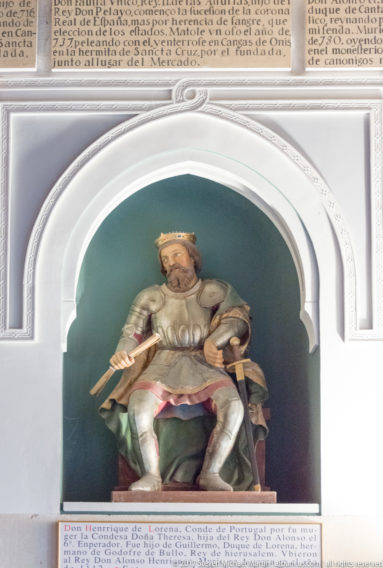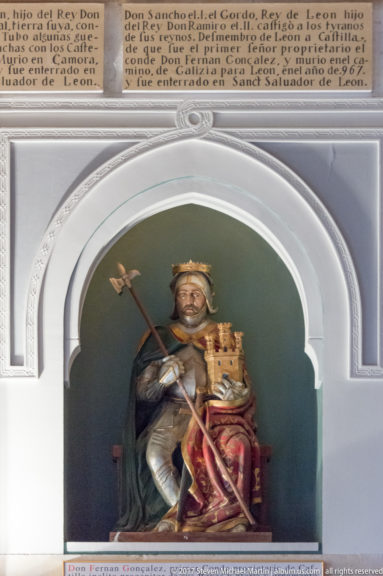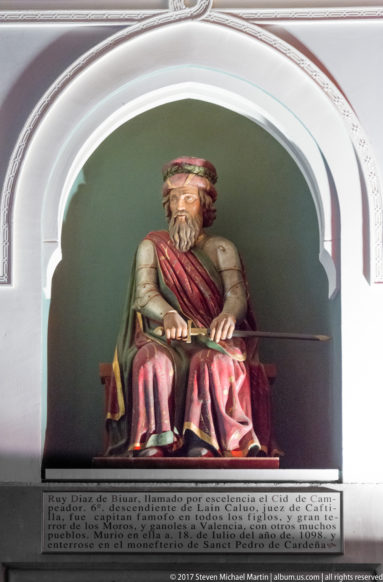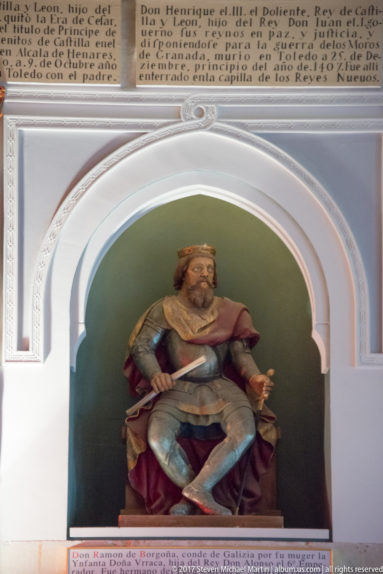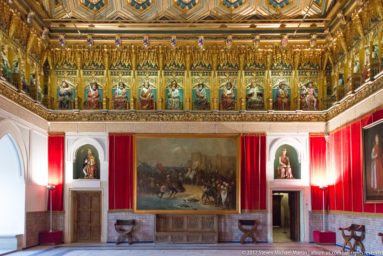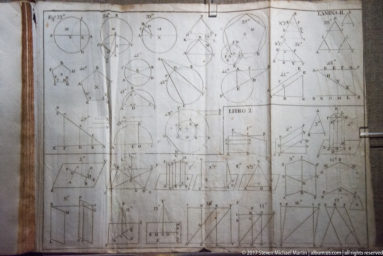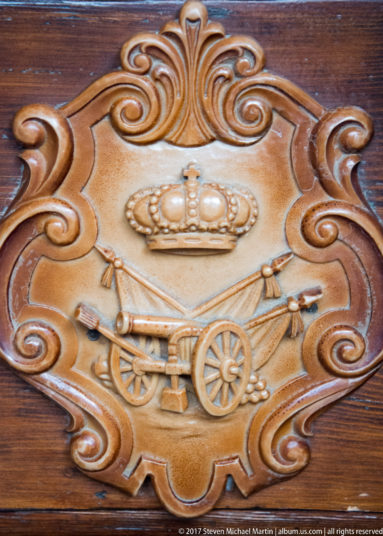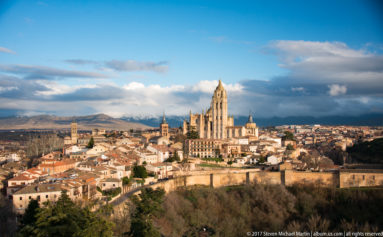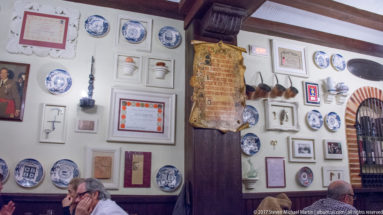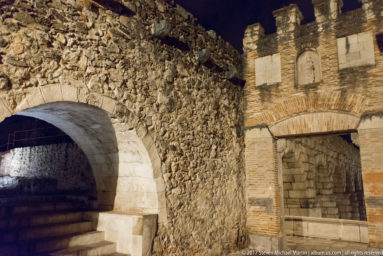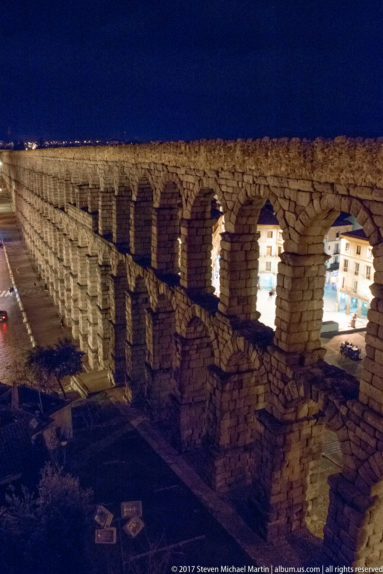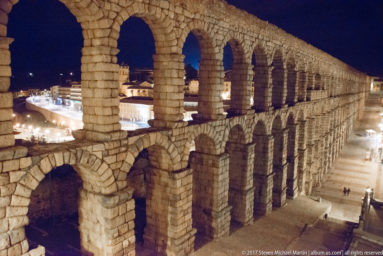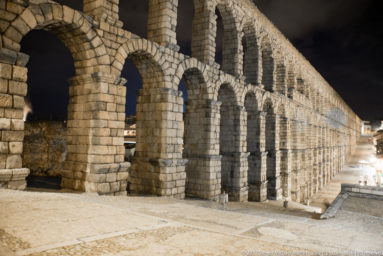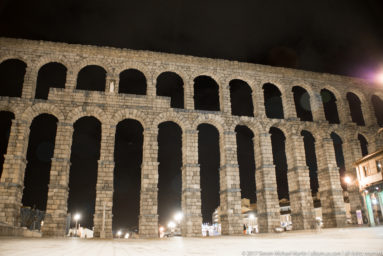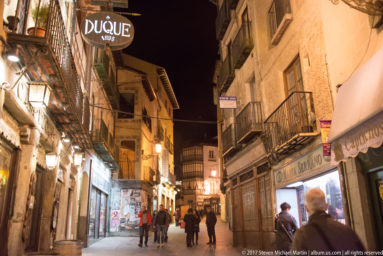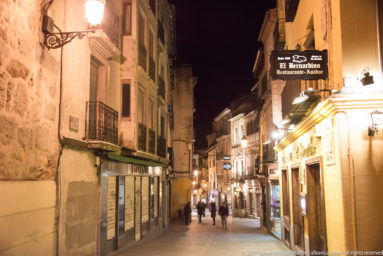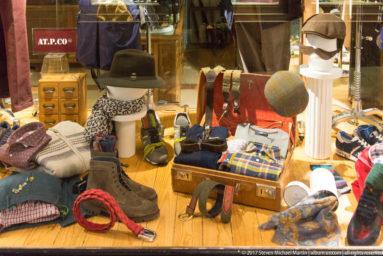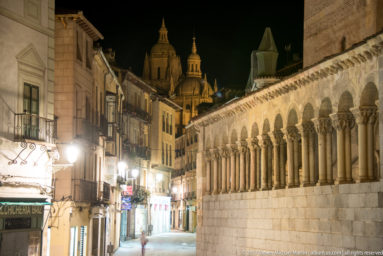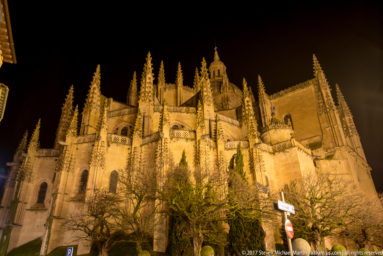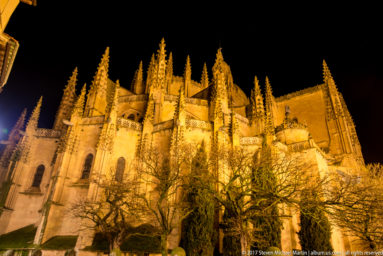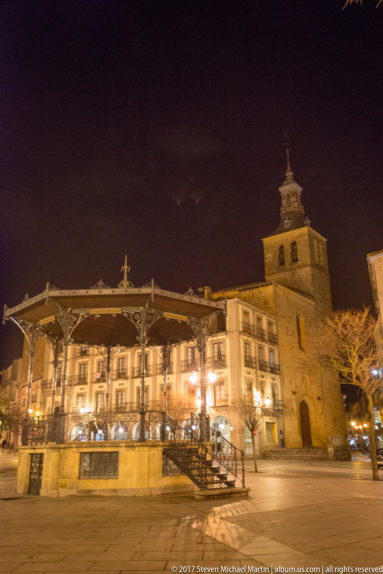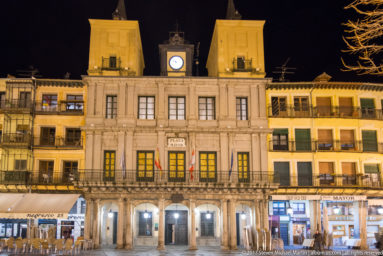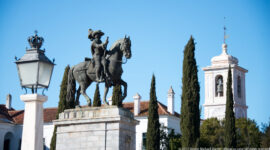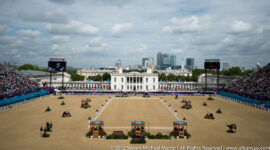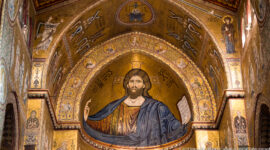Stop #19:
In the middle of the plains, Segovia pops out the middle of nowhere with yellow orange stone buildings and Roman and medieval monuments. Segovia has a long history with Romans, Moors, and Christians all living here. Isabella the Catholic (married to Ferdinand of Aragón), was crowned queen of Castile here.
Segovia’s castle (the Alcázar) was a really cool place. Basking in sun when we arrived, the sky was quickly cloudy and I missed a few good photos from the roof of the castle. But just before leaving, the sun popped out and the nice people at the castle let us climb back up the tower to get a couple photos (and then my camera battery died because there is so much to photograph in this city).
Highlights:
- Acueducto Romano. Segovia’s Roman aqueduct is one of the greatest surviving examples of Roman engineering. The granite blocks have no mortar holding them together, but the aqueduct has been standing since the end of the 1st century AD.
- Alcázar. While it dates from Roman times, the castle was expanded in the 14th century and remodeled in the 15th century. After a fire in 1862, it was remodeled. As mentioned above, we had to climb the narrow spiral staircase in the tower twice to get pictures of sunny Segovia! I also got plenty of pictures of the throne room, the chapel, and the bedroom used by Ferdinand and Isabella.
- Cathedral. Begun in 1525 and completed 65 years later, Segovia’s Gothic cathedral replaced an older cathedral that was destroyed in a battle. I got some photos of this church at night, but it wasn’t easy. The church is not lit up (at least the evening I was there). Thanks to a tripod, a great sensor on my camera, extended shutter release, and a forced ISO200 that left the shutter open for about 30 seconds, I got a few photos of the Cathedral looking like it was lit by bright floodlights!
- Plaza Mayor. Next to the cathedral is the Plaza Mayor, which probably is bustling in the summer but wasn’t too busy in February!
We stayed at the Eurostars Convento Capuchinos, which combined modern furnishings with the old structure of the Oblatas Convent, making it the city’s first five-star hotel. It was really amazing inside. The original building consisted of a church, a convent and the founders’ residence. The church has been converted into a gourmet restaurant, and the other two areas house the rooms and the hotel’s common services.
We ate at Mesón de José María. This mesón (or traditional tavern-restaurant) had several traditional Castilian specialties. I ate Cochinillo which a lady at the bar recommended to me (it is a suckling pig!). I felt bad eating it. It tasted more like chicken than pork. Randy had venison, which was actually really good. I probably won’t eat either of these dishes any time soon. Catholic guilt. Bambi and Babe were all I could think about after that meal.
Thanks to Fodor’s Travel Guides, Trip Advisor, and Wikipedia for the great lessons that helped me to plan and summarize this trip.

